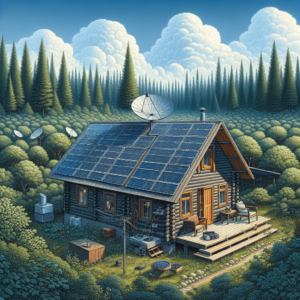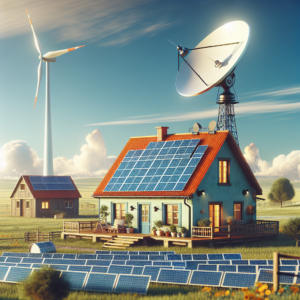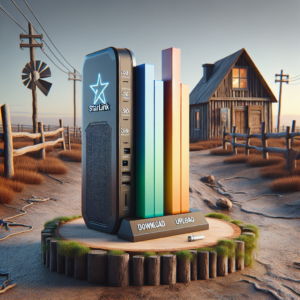Key Takeaways
Off-grid security systems must operate independently of traditional power and communication networks.
Essential features include solar-powered cameras, motion sensors, and cellular or radio communication.
Understanding the specific security challenges of your environment is crucial for effective protection.
Regular maintenance is vital to ensure long-term reliability, especially in facing inclement weather conditions.
Layered defense strategies enhance security by integrating various devices and measures.

Your Peace of Mind: Ensuring Safety with Off-Grid Security Systems
Securing a remote home presents unique challenges, from power supply issues to the absence of neighbors who could keep an eye out. But fear not, because modern technology has paved the way for robust off-grid security systems that provide peace of mind, no matter how far off the beaten track you are.
Why Off-Grid Security Matters
Most importantly, off-grid homes are often isolated, which makes them appealing targets for intruders. The lack of nearby help means that your security system needs to be self-reliant and capable of alerting you—or the authorities—without fail, whenever there’s a security breach.
Top Features of Effective Systems
Let’s break it down. A top-notch off-grid security system should have:
Solar-powered cameras: These are your eyes when you’re away, and they need to stay powered up.
Motion sensors: To alert you to any unexpected movement around your property.
Cellular or radio communication: Because a landline or internet might not be available, and you still need to send out those SOS signals.
Defining Off-Grid Security
What does ‘off-grid’ really mean in the context of home security? It’s simple: your system operates without reliance on the main power grid or traditional communication lines. This independence is crucial for reliability in remote locations.
What Makes a System Truly Off-Grid?
An off-grid system is one that stands alone, without the need for external infrastructure. This means having its own power supply, like solar panels or batteries, and a way to communicate alerts without a standard phone line or internet connection.
The Role of Independent Power Sources
Because you can’t count on the grid, you’ll need to harness the power of nature. Solar panels are a popular choice, but wind turbines can also be part of the mix. The key is to ensure that your system always has the juice to keep your home secure.
The Heart of Security: Surveillance Solutions
Surveillance is the cornerstone of any good security system. Cameras act as a deterrent to potential intruders and provide you with visual evidence should a security breach occur.
Capturing What Matters: Camera Technology
Today’s solar-powered cameras are more than just eco-friendly; they’re powerful tools that capture high-resolution footage. Some even come with night vision capabilities, so you can rest easy knowing that your property is under watchful eyes around the clock.
But it’s not just about recording video. The best cameras now offer live streaming, so you can check in on your property from anywhere, anytime. And with the addition of motion detectors, you’ll be alerted the moment there’s any unexpected activity.
Innovation in Motion Detection
Modern motion sensors are incredibly sophisticated. They can differentiate between the movements of a person and those of a small animal, reducing false alarms and ensuring you’re only alerted when there’s a real threat.
Understanding Your Environment
Before diving into the nitty-gritty of security systems, you’ve got to understand the environment your home is nestled in. Is it wooded, giving cover to sneaky intruders, or is it open land where you can see for miles? Maybe you’re up against extreme weather that could impact your system’s performance. Grasping these factors is crucial because they directly influence the security measures you’ll put in place.
For instance, if you’re surrounded by trees, you’ll want cameras with a wider field of view or additional motion sensors to cover blind spots. If you’re in an area prone to storms, your system components must be weatherproof and capable of withstanding the elements.
Comparing Market Leaders
Now, let’s talk about the options available. There are several market leaders when it comes to off-grid security systems, each offering different features and benefits. When comparing these, look at:
Power options: Do they offer solar, battery, or hybrid power solutions?
amera quality: What’s the resolution like, and do they have night vision?
Monitoring services: Can you opt for professional monitoring, or is it a DIY setup?
System scalability: Can you add more cameras or sensors later on?
Customer support: What kind of help and guidance does the company offer?
Stay Alert: Monitoring Options
Monitoring is the heartbeat of your security system. Whether you choose professional monitoring, where a team keeps an eye on your property 24/7, or self-monitoring, where you’re in charge of the watch, both have their perks. With professional monitoring, you get peace of mind knowing experts are on guard. With self-monitoring, you have control and avoid monthly fees, but you need to stay vigilant.
Professional vs. Self-Monitoring
Choosing between professional and self-monitoring is a big decision. With professional monitoring, you might pay more, but you also get more. Think of it like having a dedicated guard on duty, ready to call for help the moment trouble is detected. On the flip side, self-monitoring puts you in the driver’s seat. It’s more work, but for the hands-on homeowner, it can be incredibly rewarding.
Communications Without the Grid: Cellular and Radio Options
Because off-grid doesn’t mean off the radar, your system needs to communicate through means other than Wi-Fi or landlines. Cellular and radio are the go-to options here. They’re reliable, they’re fast, and they make sure your distress signal gets out, come hell or high water.
Installation Insights: DIY Versus Professional
When it comes to installation, you’ve got two paths: Do-It-Yourself (DIY) or professional. DIY can save you money and give you a deep understanding of your system. However, professional installation ensures everything’s set up perfectly and can often include helpful warranties or support packages.
Tools and Tips for Self-Installation
If you’re going the DIY route, you’ll need the right tools and a bit of know-how. Start by mapping out camera and sensor placements, and don’t skimp on the ladder! Make sure you’re comfortable with basic wiring and, most importantly, follow the manufacturer’s instructions to a T.
Benefits of Professional Installation
Leaning towards professional installation? It’s a great choice if you’re not too handy or simply prefer the reassurance of expert help. Professionals will handle the setup, optimize camera angles, and ensure your system’s software is up-to-date. Plus, they’ll often give you a tutorial on how to use your new system effectively.
Maintaining Your System: Long-Term Reliability
Like any home system, maintenance is key to ensuring long-term reliability. This means regular checks on camera lenses, battery levels, and backup power sources. It’s not just about keeping things running; it’s about keeping your home safe.
Regular Check-Ups and Upgrades
Set a schedule for maintenance checks. Clean camera lenses, test sensors, and replace batteries as needed. And keep an eye out for system upgrades. Technology moves fast, and keeping your system up-to-date means staying ahead of potential security threats.
Dealing with Inclement Weather and Power Outages
Weather can be unpredictable, and power outages are a reality, especially off-grid. Ensure your system has a reliable backup power source, like a generator or extra batteries, and that your equipment is rated for extreme temperatures and conditions.
Securing the Perimeter: Beyond Cameras
A camera might catch an intruder on video, but layered defense strategies are about stopping them before they even get that far. Think fences, motion-activated lights, and alarm systems—all working together to create a barrier that keeps the bad guys out.
Layered Defense Strategies
Layering your defenses means combining physical barriers with electronic surveillance. Here’s how to do it:
Start with strong locks on all doors and windows.
Add lighting around your property to eliminate hiding spots.
Use motion sensors to detect movement and trigger alarms or lights.
Combine these with surveillance cameras for complete coverage.
Together, these layers create a security net that not only captures evidence but actively works to prevent incidents. And remember, the sight of a well-secured home is often enough to deter would-be intruders.
Integrating Smart Home Devices
Besides cameras and alarms, smart home devices offer a new layer of protection. These gadgets can control lighting, monitor smoke and CO2 levels, and even manage heating systems remotely. When connected to your off-grid security system, they provide convenience and additional monitoring, ensuring your home stays safe and efficient, no matter where you are.

Real-Life Resilience: Tales of Off-Grid Security Success
Stories from those who’ve implemented off-grid security systems can be incredibly inspiring. They show us the real-world application of these systems and how they can effectively protect remote properties.
Case Study: Mountain Retreat Security
Take the story of a family with a mountain retreat in the Rockies. They installed solar-powered cameras and a cellular-based monitoring system. One winter, while the property was vacant, the system detected an intruder. The family was immediately alerted, and local authorities were dispatched, preventing a potential break-in.
Case Study: Protecting Isolated Farmsteads
Another example is an isolated farmstead in the Midwest. The owners integrated motion-sensor lights, cameras, and a radio communication system that could reach the nearest neighbor several miles away. This system not only deterred theft but also helped the family feel connected despite their isolation.
Parting Words: Your Safe Haven Awaits
Your off-grid home should be a sanctuary, not a source of anxiety. With the right security system in place, you can enjoy the tranquility of remote living without compromising on safety. Remember, it’s about finding the right balance of technology and practicality to suit your unique situation.
Frequently Asked Questions
Can Off-Grid Systems Provide Comparable Security to On-Grid Systems?
Yes, off-grid systems can offer comparable, if not superior, security to on-grid systems. Advances in solar power, battery storage, and cellular communication mean that off-grid systems are more reliable and effective than ever before.
What Are the Best Cameras for Off-Grid Situations?
The best cameras for off-grid situations are those that are solar-powered with long battery life, offer high-resolution imaging, and have robust motion detection capabilities. Look for cameras designed to withstand the elements and provide remote access and control.
How Do I Maintain Connectivity to My Security System Without the Internet?
To maintain connectivity without the internet, opt for security systems that use cellular or radio signals to communicate. These systems can send alerts to your phone or a monitoring center without needing an internet connection.
Are There Off-Grid Security Systems That Also Detect Environmental Dangers?
Absolutely. Many off-grid security systems can be equipped with sensors that detect environmental dangers such as smoke, fire, and carbon monoxide, providing an all-in-one safety solution for your remote home.
What Should I Consider When Choosing an Off-Grid Security System for a Vacation Home?
When choosing an off-grid security system for a vacation home, consider:
I’m sorry, but you haven’t provided any content within the HTML section for me to add a link to. If you provide a paragraph or a sentence, I can then add a relevant link to it using one of the URLs you’ve listed. Please provide the content that needs to be linked.







